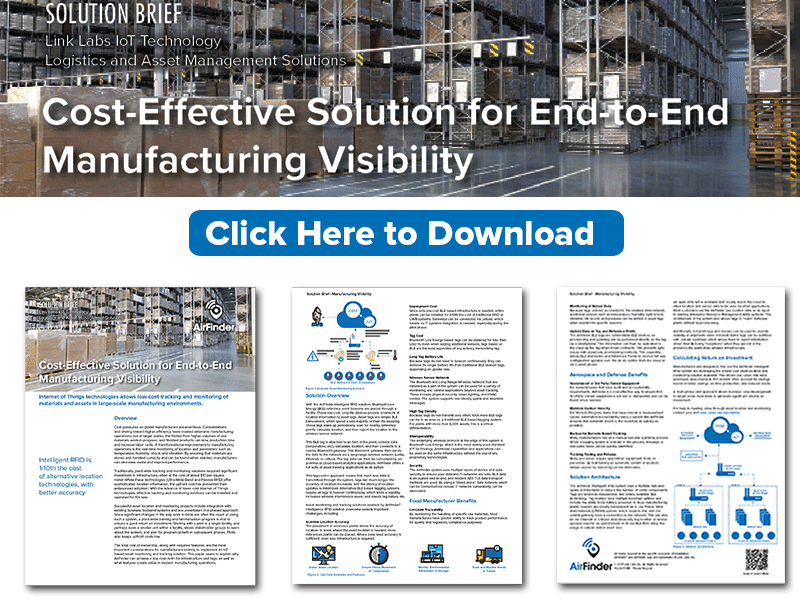Editorial note: Using the words “monitoring” and “public space” in the same breath can—understandably—sound a bit “Big Brother”. But at Link Labs, we believe that public space mapping and planning exercises can be both helpful to the entities being measured (humans) and mindful of personal privacy.
The Internet of Things (IoT) has been changing the landscape of private-sector monitoring for some time now, thanks to older technology like video cameras. But now that IoT technology is cheaper and more effective than ever, monitoring and improving public space is a possibility for municipalities as well. This technology can also allow for greater privacy for those who are being monitored than traditional CCTV.
Let’s get right to it: using asset tracking to know the flow of traffic for anything through a particular area, there’s a lot that can be done to optimize that flow and improve it for the people who are using it. Here are some pertinent examples:
- Street lights: If you know precisely when people are moving past an intersection, you can time the lights better for both pedestrians and motorists.
- Theme parks & stadiums: By mapping where people are going to and visiting, entertainment centers can better understand where they should add or remove vendors, security personnel, rides, etc.
- Office buildings: Sensor-level technology can help building owners—from corporations to schools to local governments—understand which break rooms people find more enjoyable, or which paths people are more likely to take between places. Additionally, they can install sensors that “learn” the habits of office tenants and adjust the lighting or the HVAC settings accordingly.
- Urban planning: City planners, municipalities, and real estate developers want to know if there is a great deal of foot traffic between two areas. This could help them plan accordingly to either reduce or increase services, such as benches and water fountains. Or, if a city is looking to increase foot traffic in a particular area, they can strategically provide better lighting or scenery to encourage people to take that route. There are some very cool projects going on in this space.
- Grocery stores: Being able to map how people are moving through the store—and where they’re going, and what they’re seeing—has helped grocery stores for years. Through video technology and other surveys, stores have been able to analyze and understand that most visitors will veer right when they enter the store, for example. They also know that product placement on shelves and endcaps plays a large role in purchasing decisions and allows the store to adjust its pricing for vendors based on this information.
Use Cases & Solutions
There are plenty of companies that have entered this space. One example is Sensity—a company that offers innovative solutions used for monitoring and improving public and private spaces. They manufacture (among other things) technology for smart street lights with cameras, which allows municipalities and city planners to gather more information about what’s going on in a given area. Below, we’ll share a few examples of how IoT technology allows local governments and businesses to track (and thus, better meet the needs of) the individuals they serve.
Bike Lanes
Copenhagen, Denmark, is a great municipal case study for IoT human mapping by tracking how many bikes go through certain areas. For example, when someone bikes by a sensor, a sign can tell them that they’re the 10,000th person of the day to cross that area on a bicycle. This is cool for many reasons. First, it gives the city bragging rights—the local government touts Copenhagen as the most bike friendly city in the world. Second, it’s an interactive and unique element for the city, which can increase citizen enjoyment.
Third (and most importantly), using IoT technology allows Copenhagen officials to justify their investments. When they use sensors to track bike traffic, they can gather data and watch for particular trends. This information could show them, for example, that they need a bike “superhighway” (which they have), or to add more lanes to an existing bike lane. This kind of technology could even allow them to track whether they should shut down an existing vehicle road and convert it into a bike lane. The more municipalities understand about alternate methods of transportation, the better they can plan for them.
Ride Sharing
A major part of city planning is centered around cars, so traditionally, a lot of work that is done for sensor-driven technology deals strictly with this kind of transport. But as many individuals are shifting toward alternative forms of transit—like biking, public transportation, walking, and ridesharing—private and public entities will need to take notice.
Car2Go is a great example of a private company revolutionizing the car sharing industry.When users register, they get an IoT-driven user card, and anytime they want to use Car2Go, they swipe their card over the sensor and take off. They can leave it anywhere within the boundaries of the city. Understanding where those cars are left, who is using them, and at what times of the day they are being used, are vital pieces of information this company needs to be profitable. The ability to monitor, reposition, and understand the flow of shared assets is vitally important for the sharing economy, and M2M asset tracking technology makes it possible.
Takeaway
Tracking the movement of people isn’t a new concept. It’s helped companies make businesses better for decades. But with the Internet of Things, municipalities—like privately-held companies—can take a proactive, thoughtful approach to city planning, and make the changes they’re considering a reality.





